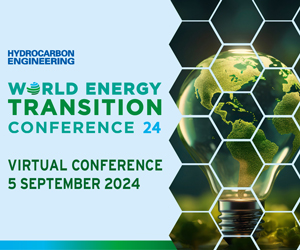We use cookies and data to provide and maintain Google services.
Tracking interruptions and protecting against spam, fraud, and abuse is part of our priorities. Measuring audience engagement and site statistics allows us to understand how our services are used and improve their quality. By choosing “Accept all,” we will develop and improve new services while measuring the effectiveness of advertisements. Additionally, we will display personalized content based on your settings. Personalized ads are based on your past activity, such as your previous searches on this browser. If you prefer, by selecting “Reject all,” we will not use cookies for these additional purposes.

Table of Contents
ToggleWhat is tidal and wave energy?
Tidal energy and wave energy represent promising renewable sources in the field of marine technologies. These forms of energy harness the power of ocean movements to generate electricity sustainably. Tidal energy uses the movements of tides, caused by the gravitational pull of the moon and sun, to drive turbines and produce electrical energy. In contrast, wave energy captures the kinetic and potential energy of waves on the ocean’s surface. These technologies are essential for diversifying the global energy mix and reducing dependence on fossil fuels.
The development of these energies requires continuous technological innovations and effective integration into national electric grids. For example, Eco-Wave Power has demonstrated how tidal energy can be effectively integrated into the national grid, notably at the port of Jaffa.
Furthermore, the blue economy plays a crucial role in promoting these technologies. Experts like Leena Srivastava emphasize the importance of sustainable strategies to ensure the long-term viability of tidal and wave energy projects. These initiatives contribute not only to the production of clean energy but also to the preservation of marine ecosystems.
What is the current size of the tidal and wave energy market?
The global tidal energy and wave energy market is rapidly expanding, with a projected compound annual growth rate (CAGR) of 5.6% between 2023 and 2028. In 2023, the market size was estimated to be around $3.2 billion, with projections reaching $5.1 billion by 2028. This growth is primarily driven by the increasing demand for renewable energy and heightened efforts to reduce carbon emissions globally.
Investments in tidal and wave energy infrastructure have seen a significant rise. Countries such as France, the United Kingdom, and Canada are leading the way in investments, supported by favorable government policies and financial incentives. These investments are crucial for the development and implementation of large-scale projects, thereby increasing installed capacity and reducing production costs.
Moreover, recent market studies indicate that the Asia-Pacific region is also becoming a key player in this sector. The expansion of production capacities and the increase of pilot projects in countries like Japan and China contribute to the overall market growth.
What are the main market shares in tidal and wave energy?
The tidal and wave energy market is dominated by a few key players who hold significant market shares. The main companies include Siemens Gamesa, Tidal Lagoon Power, and Eco-Wave Power. These companies invest heavily in research and development to improve the efficiency and reliability of tidal and wave technologies.
In Europe, the United Kingdom is an undisputed leader with iconic projects such as the Hafren Power tidal project in Wales. In the United States, initiatives like those taking place in Maine and California show an increasing interest and investment in this field. In Asia, South Korea and Japan are investing in pilot projects to tap into the untapped potential of marine resources.
Moreover, strategic partnerships between technology companies and local governments play a crucial role in the distribution of market shares. These collaborations facilitate financing, implementation, and management of large-scale projects, thereby ensuring balanced and sustainable market growth.
What are the current trends in the marine energy market?
The marine energy market is experiencing several notable trends that are shaping its evolution. One of the main trends is technological innovation. Researchers and engineers are continuously working to improve energy conversion systems to increase their efficiency and reduce costs. For instance, A Framework for Marine Energy and Ecosystem Services for Coastal Communities proposes an integrated framework to maximize the economic and ecological benefits of tidal projects.
Another significant trend is the integration of artificial intelligence and the Internet of Things (IoT) in tidal and wave systems. These technologies enable real-time monitoring, predictive maintenance, and performance optimization, thus contributing to more effective resource management.
Furthermore, the emphasis on sustainability and the protection of marine ecosystems strongly influences the market. Companies are adopting environmentally responsible practices to minimize the environmental impact of their installations, ensuring a harmonious coexistence between energy infrastructure and marine biodiversity.
What is the demand for tidal and wave energy?
The demand for tidal energy and wave energy is continuously increasing, driven by a heightened awareness of environmental issues and the need to diversify energy sources. Governments around the world are implementing incentive policies to encourage investments in marine renewable energies, stimulating industrial and residential demand.
Industrial sectors, in particular, are showing growing interest in tidal and wave energy due to their reliability and low carbon footprint. These energies are particularly attractive for port facilities, industrial complexes located near coastlines, and isolated areas where access to traditional electrical grids is limited.
Moreover, consumer awareness of the importance of renewable energies positively influences demand. Companies focused on sustainable development are adopting these energy sources to enhance their brand image and meet consumers’ expectations regarding environmental responsibility.
Initiatives like those of Arianna Huffington and her commitment to the blue economy demonstrate how the support of opinion leaders can strengthen demand and encourage more projects in the marine energy sector.
What are the growth prospects for this market?
The growth prospects for the tidal and wave energy market are extremely promising. Projections indicate a significant increase in installed capacity over the coming years, supported by increased investments and technological advancements. According to analysts, the market could reach $7 billion by 2030, with a considerable impact on the global energy landscape.
International collaboration plays a vital role in this growth. Partnerships between countries with vast marine resources and technology experts allow for knowledge sharing and the development of innovative solutions. These collaborations also facilitate access to the necessary financing to carry out ambitious projects.
Furthermore, the evolution of energy policies and international commitments to reduce greenhouse gas emissions favor the adoption of marine energy. The Paris Agreement on climate and other environmental initiatives create an environment conducive to the expansion of renewable energies, including tidal and wave energy.
Finally, the growing awareness of environmental issues and the demand for sustainable energy solutions will continue to propel market growth. Future innovations, such as the integration of hybrid technologies and improvements in energy storage infrastructure, are also expected to contribute to strengthening the position of marine energy in the overall energy mix.
"Ouais mais en Bretagne on a la mer et des marées, alors l'énergie marémotrice wesh !"
— Parti Pirate (@PartiPirate) October 19, 2019
Oui, certes, et en Alsace tu fais comment ? pic.twitter.com/wfEMjnqcE7









